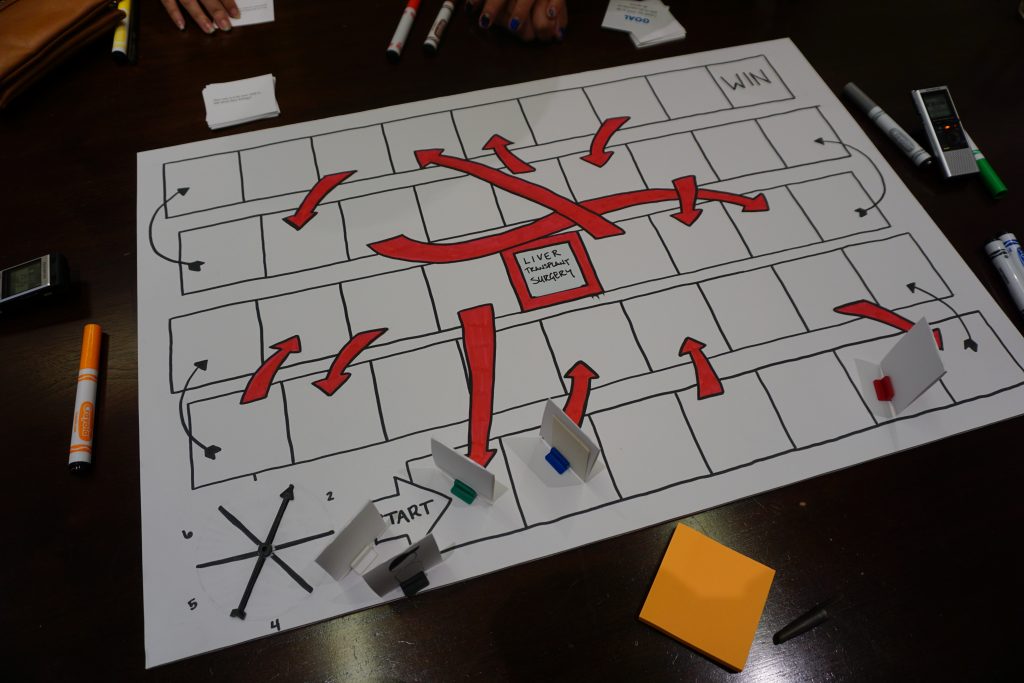While chronic or life-threatening conditions are very serious, believe it or not, playing a game could be a really great way to learn about them.
In a jam session held in February, we introduced the Game of Liver Transplant to adolescents with biliary atresia and their parents. The object of the game is to move past your liver transplant.
The game board is very simple, similar to Chutes & Ladders or Candyland, where moving forward is the only true goal. What makes this game special is that when a player lands on a square with an arrow, they discuss anything that would get them closer to (or take them farther from, depending on the direction of the arrow) their liver transplant. The discussions that arose from the game were the real insights.

But what does winning mean for kids with biliary atresia, anyway?
Biliary atresia is a rare condition you’re born with that occurs during infancy. The gallbladder is blocked in babies who have it, causing bile to stay trapped inside the liver. This causes damage right away, leading to severe jaundice and potentially, even cirrhosis, and eventually liver failure. Usually babies with biliary atresia have a procedure called a Kasai which helps bile flow from the liver into the intestine. The Kasai is successful 60 to 85 percent of the time, but it is not a cure. It allows babies to live a fairly healthy life for several years, but they usually still need a liver transplant at some point.
So, where’s the win?
In this case, we learned that winning basically equals living a “normal” healthy life. Parents want their kids to be able to act like kids without having to worry about them playing too hard, forgetting to take their medicine, or even dying. Adolescents want to be treated normally, and not like something is wrong with them. But even young kids in this jam session discussed the possibility of death.
The goal of this project is to discover patient centered outcomes. In other words, the study team wants to find out what can make a patient’s life easier. What does the patient want and need from their treatment?
Sometimes winning can be as simple as living a healthy life at all.
